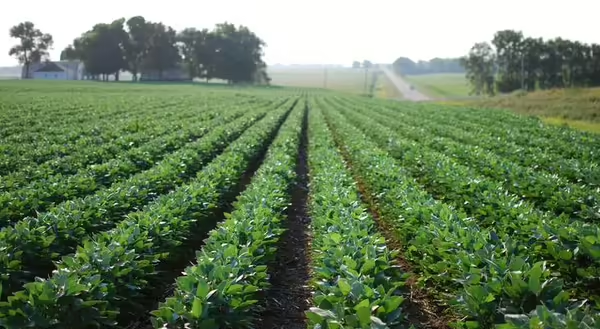
The United States Department of Agriculture (USDA) has released the estimated acres for corn and soybeans to be planted. The report indicates a substantial reduction in intended soybean plantings for 2025 (at a negative 4%), offset by a significant increase in intended acres to be planted in corn (at a positive 5%). Illinois growers are expected to have slightly fewer acreage changes than the national averages. Due to the agronomic benefits, Midwest farmers will continue to primarily alternate fields between corn and soybeans yearly.
Soybean ending supply stocks have grown in recent years. The U.S. is no longer the largest grower of soybeans at 28% of the world's production compared to Brazil, which grows 40%. Decreasing soybean prices is a factor in reducing U.S. soybean production. Farmers attempted to negotiate more favorable flexible cash rent calculation formulas on soybeans over corn in 2025.
Trade war retaliation from the current U.S. tariff policy threatens other nations. It may impact U.S. soybean producers as the world market has other countries through which to secure soybean imports. The average age of Illinois farmers means many are old enough to remember the devastation on grain exports stemming from the 1980 grain embargo on the Soviet Union by the Carter Administration. This contributed to sending the US agriculture industry into a long-term farm depression. U.S. farm production has been used as an economic weapon with devastating results for Illinois farmers.
The U.S. grows 31% of corn worldwide, outpacing China’s 24%. Farmers believe they have an easier time producing higher yields of corn than soybeans per acre, thus potentially improving profits. This year, there is more optimism for corn profitability vs. soybeans as crop budgets for 2025 indicate more negative returns for growing soybeans than corn.
Early April Central Illinois soybean cash bids have dropped to below $10 for fall 2025 in some locations. Corn is in the lower $4 to slightly less range per bushel. Soybean prices have declined more sharply than corn since the 2022/2023 production years. Farm producers are concerned about production costs, cash rent, interest rates, and lower prices. Looking beyond 2025, farmers and landowners may want to negotiate flexible cash rent leases with a lower base rent to offset the potential for lower farm profits.
In many years, extra corn acres often come from regions of the country where the harvest of those acres is marginal due to being grown in non-prime growing areas. This year’s increase in corn acres does not appear to be as based on marginal acres as in years past. Instead, it is based more on reduced soybean acres. Weather conditions will dictate how many acres are planted and harvested.
Farmers may need to emphasize profits over increasing yield by incorporating practices that reduce machinery and fuel costs. This will minimize tillage costs and gain financial incentives by capitalizing on various programs incentivizing eco-friendly production practices, such as cover crops, reduced tillage, Illinois STAR, USDA programs, and carbon credits.